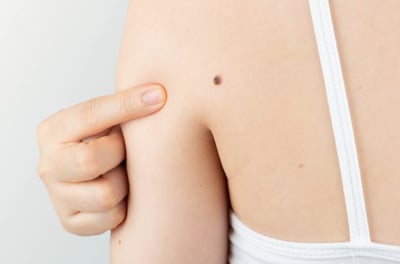
Did you recently visit your dermatologist, have a tissue sample taken and later were billed for pathology lab services? You may have questioned what pathology is, why you got billed for it, or whose name is that? – I never saw a doctor by that name!
Your questions are all completely valid and understandable. Let us address them for you.
What is a Pathologist?
Let’s start from the beginning and explain what a pathologist is. A pathologist is a type of doctor that specializes in diagnosing diseases using laboratory tests and microscopic examination of your tissue. Some pathologists further specialize in only the diagnosis of skin disease and are called dermatopathologists, or a pathologist of the skin. Think of a dermatopathologist as the Sherlock Holmes of skin diseases. In order to make a definitive diagnosis of your skin condition, he or she must make microscopic observations and compare it with other tests performed, along with your provider’s examination.
I saw a dermatologist, not pathologist – what is the difference?
After completion of medical school, a physician will complete years of residency training in either dermatology or pathology. After finishing their residency training, a dermatopathologist will complete an additional year of education in specifically diagnosing skin diseases using a microscope. Dermatologists see patients in the office and provide treatment options, while dermatopathologists receive the biopsy samples, look at the tissue samples and make the diagnoses.
Why did I get billed for pathology services?
We understand it can be frustrating to see a doctor’s name show up on your bill that you never even sat down with. While you may have never met the dermatopathologist listed on your bill, he or she has met your tissue sample.
Let us explain the typical process of what happens from the moment a biopsy is performed to when results are received:
- Tissue sample is removed via biopsy
You may have come in for a rash or a skin cancer screening. While your dermatologist visually saw something was wrong, some rashes or tumors may look the same to the naked eye. If a visual diagnosis cannot be made, a tissue sample is removed for microscopic exam and diagnosis by a dermatopathologist. According to Kelli Hutchens, MD, board-certified Dermatopathologist with Forefront Dermatology, “the most common tissue samples we review are ones where there is a concern for skin cancer. The best way to tell for certain if a mole or other spot on your skin is cancerous is to put it under a microscope.”
- Sample sent to pathology lab
Once your tissue sample is removed, it is packaged and immediately sent to your dermatologist’s preferred pathology lab. While sending to our lab is optional, keeping your tissue in-house helps to streamline the process, insuring the dermatopathologist can view your electronic medical record and report results directly to your provider through our integrated network. Your dermatologist is well acquainted and trusts your sample with our team of dermatopathologists. “As pathologists, we work very closely with your dermatologist. We review your medical record and provider’s notes and any photos they may have taken to help us make the best diagnosis so you can receive the most appropriate treatment for your condition,” stated Dr. Hutchens. Forefront Dermatology’s lab is composed of many highly-trained and certified medical professionals that use state-of-the-art equipment to turn your skin sample into a glass slide for the dermatopathologist to read. “You may see one of our doctor’s names on your bill – we may not have met you personally, but we consider you our patient and are dedicated to providing you the best care” stated Dr. Hutchens.
- Pathology results are sent to your dermatologist
Once your tissue sample is prepped, analyzed and diagnosed, the dermatopathologist sends your results directly to your provider. Oftentimes the provider and the dermatopathologist further discuss results prior to informing you of the diagnosis.
Understanding your bill and pathology lab services is important to us. We hope this has helped you understand the vital role a dermatopathologist has in confirming your diagnosis, and why his or her name may show up on your next bill.





